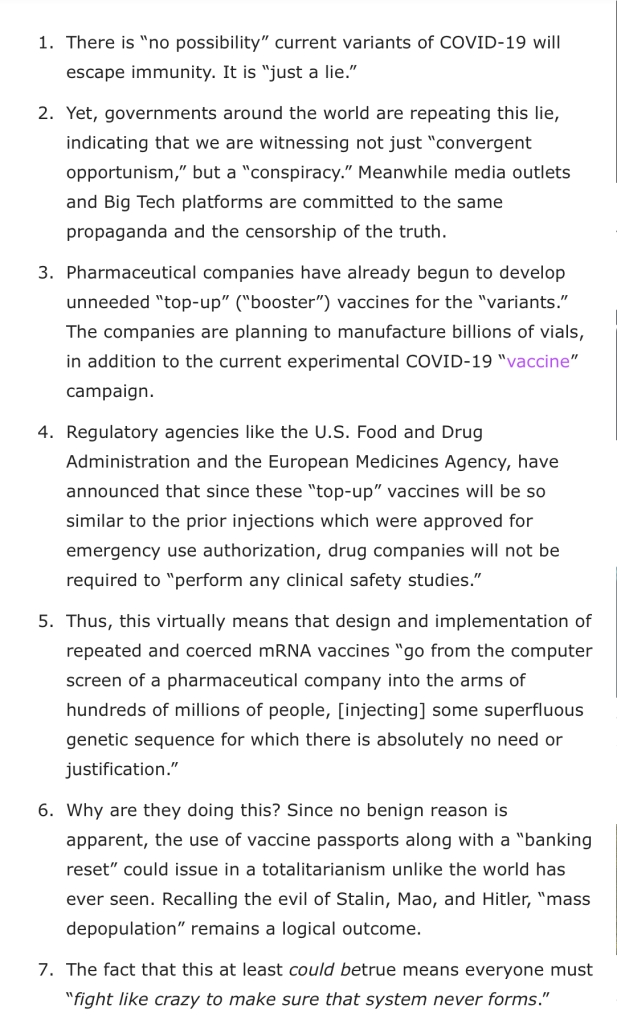Why is the climate change denier movement so passionate?
One reason is that climate alarmists use a particularly frustrating fallacy to push their solutions. And so, our points are rarely addressed, and our “passion” is frustration at a sophistic trick.
Conflating Implementation with Problem Identification
In order to solve a problem, we need at least these four steps:
1. Correctly identify that a problem exists and what its extent is.
2. Correctly identify the causes of the problem, and their relative contributions.
3. Correctly identify the “best” solution, which usually is the most effective with the least cost.
4. Implement that best solution well.
Our frustration comes when the alarmists start arguing #2, #3, and #4. When we push back, the alarmists will justify, say, their solutions, by appealing to (a small part of) #1.
“You are ‘denying’ that there is a problem at all.”
“No, we may have disagreements with your certainty at many points of these steps, but the least of our disagreements will be with historic data on warming; we were just now arguing our biggest disagreement with you — against implementing your totalitarian, civilization-destroying solution! Why did you just change the subject back to historic warming data?”
A “bailey” is an enclosed area lightly defended where most of the people hang out day-to-day. A “motte” is a hill with a castle atop it, behind the bailey. Upon attack, the people retreat from the bailey to the motte, which is much more fortified and much easier to defend, but it is sufficiently restrictive that it is not where the people want to be day-to-day.
The worst use of this fallacy is when alarmists cry out for international governmental control of the world economy to ‘save’ us from global warming. As you can see from the steps I’ve outlined above, which are necessary to well solve a problem, the alarmists are demanding an implementation of a particular solution — they are operating at step #4. That would be they hanging out in their “bailey”.
We anti-alarmists, seeing the alarmists at the end of the problem solution process, will object for a myriad of reasons. We might object because we think that their solution (e.g., Paris):
* will not be implemented well (#4),
* will not solve the actual problem (#3),
* causes more problems than it solves (#3),
* is far inferior to better solutions (#3),
* solves a less important cause (#3)
* misidentifies the most important causes (#2),
* exaggerates the size of the problem (#1)
* uses Monte Carlo simulations as though they were crystal balls (#1)
* uses economic forecasts of the future world economy as though they were crystal balls (#1)
* etc.
Upon hearing our concerns, the alarmists retreat from the bailey to their motte. They stop arguing for their proposed one-world-totalitarian solution <0559>, and instead fall back to their well-defended fortress.
“Are you denying that the temperature has increased over the last century!!! Oh, my!! How can you be so unscientific!!!!”
Oh, man, is that irritating!
{To see this demonstrated, the humor in this parable <0302> is derived from the warrior’s repeatedly falling back to pointing out the paw print (his motte) every time his totalitarian solution (his bailey) is challenged by the old man: <0302>}
The Motte-and-Bailey Fallacy is so effective because it conflates the outrageous (a one world totalitarian government enslaving all human action) with the easily defended (temperatures have increased a bit in the past). It is so frustrating because were we to agree that the motte is well defended (i.e., temperatures may have increased in the past), the alarmists would cheerfully return to their bailey, happily pronouncing that “all scientists agree” with some outrageous totalitarian solution. <0535>
Asking for intellectual honesty from alarmists is not possible: this fallacy has been so effective that there is no reason for them to discontinue using it.
The solution is to call them on it.
If there is any “overwhelming agreement of scientists”, it is only on some minimal aspects of Step #1.
Our passion is not against historical data, but against, for example, the refusal to talk about the destruction of humanity that would occur were we to implement many alarmists’ solutions (e.g., Step #4). <1355>
Though I agree that the motte/bailey gambit is vexingly annoying coming from the alarmists, my passion is largely aroused by the historical data that alarmists ignore, and even lie about.
But I go further. Most alarmists know nothing about their subject, or merely repeat a few pet theories and ignore the critical literature. I go further yet. Many researchers claiming to be “climate scientists” know very little about long cycles of climate. Indeed, their lack of understanding of climate cycles is astounding, and I hazard that many of these researchers are not competent in their field.
That is a daring thing for a non-scientist to say, I know, but we should remember a few things:
I could go on. Though I am annoyed by the motte/bailey biz you mention, in a sense I understand and almost forgive the alarmists. They are doing what ideologues almost always do. People have great difficulty separating matters of fact from value. And politicians are known liars and opportunists; journalists hacks and propagandists — so of course they transmit the idiocies. This is known.
But when scientists behave like incompetents and worse — propagandists and liars — I get my dander up.
Climate alarmism is a cult. It works like an End Time Cult. We should be studying social psychology (see Festinger et al.) and roll our eyes when “scientists” say obviously idiotic and non-factual things.
















